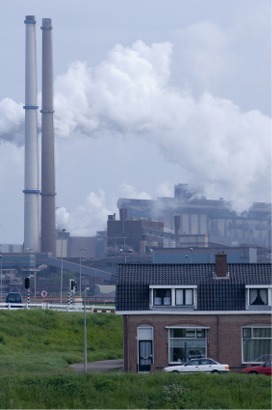| |
Brownfields, Vacant Properties and
Sustainable Community Development
|
| |
Brownfields are defined as
abandoned or underused industrial or commercial
properties where redevelopment is complicated by
actual or perceived environmental contamination. By
one estimate, there are over 500,000 of these sites
nationwide many of which are located in or near
low-income, working class, and people of color
communities. Arguably, vacant properties are
brownfields without the pollution. However, similar
to brownfields, vacant properties are often
associated with blight, high crime rates and
neighborhood stigma. Furthermore, frequently, they
abut brownfields and can also be affected by
stationary (e.g., utilities, dumps, sewage treatment
plants) and mobile
pollution sources (e.g., trucks, buses, trains, highways,
freeways). |
 |
| |
Revitalizing and redeveloping
abandoned, often contaminated properties, demonstrates the
convergence of complex environmental, social and economic
issues. For example, compared to their numbers in the
general population, many of these properties are in
“minority” and low-income neighborhoods. Thus, equity, race
and class discrimination, the diminished tax base in
municipalities and suburban sprawl are inseparable from the
blight and marginalized communities that accompany
brownfields.
In the past two decades, a
coherent vision of sustainability has emerged, which
addresses the relationship of these issues to the health and
vitality of a community. Commonly referred to as
sustainable communities, this vision recognizes the
significance of meeting community needs and aspirations, and
positions those who live within it as integral partners in
decision-making. The sustainable communities approach is
the junction of equity, economics and the environment. It's
focused on building the capacity of communities to
participate in decisions, creating partnerships with other
stakeholders, mobilizing resources and producing sustainable
results. |
|